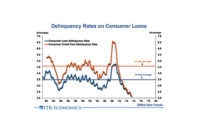Across the economy there is a lot of business on the drawing board that people want to do but they are having trouble closing the deal for whatever reason,” said Steve Tusa, CFA, analyst at J.P. Morgan. “While they are seeing growth in the indicators, they are not seeing it in their orders yet.”
During the 2013 HVACR Market Update and Outlook webinar, Tusa discussed the bright spots in the U.S. economy tempered by a sober look at the national debt.
Housing trends are moving up and according to CNN Money; the numbers of starts at the end of May were at the highest they have been since the drop in 2006. That coupled with an increase in the jobs growth percentages shows the U.S. economy in a positive economic light on a global scale.
“The backdrop of this growth, however, is all the debt sitting in the government and at some point it has to be dealt with,” said Tusa. “That is something I think that keeps consumers and business from pushing further at this time.”
Despite the growth and the debt backdrop, Tusa indicated that the data he was examining did not point to a near-term recession. He was cautious in claiming things will get much better, but he did not expect them to be getting worse as many other economists have predicted.
Tusa’s presentation evaluated demand from three perspectives: new construction, add-on in existing homes, and replacement demand. He predicted modest growth for the residential a/c and heat pump market, as well as residential equipment revenue. Tusa also pointed out that inverter compressor technology should continue to gain steam as the technology advances.
“Mini splits continue to grow, a/c heat pumps are up about 2 percent, and replacement and add-ons were up only about 1 percent in the year,” he said. “Service and replacement compressors were lower year over year.”
In the commercial HVAC sector, growth is predicted for 2013 and 2014.
“Construction indicators are showing signs of improvement,” said Tusa, “while public sector construction spending remains weak.
“Bottom line is that the 2013 and 2014 industry equipment revenue model shows 6 percent growth in 2013 and 9 percent growth in 2014,” he explained.
As far as regulatory issues, J.P. Morgan is expecting continued increases in the price for R-22 refrigerant as allocations are lowered. In looking at the refrigerant demand mix, Tusa reported that R-22 went from a 20 percent market share to a 15 percent market share.
“Declining market shares for R-22-based units suggest that higher prices are changing consumer behavior,” explained Tusa.
During the webinar Tusa discussed industry consolidation moves and what those implications could be for industry members. He took a moment to specifically address the Daikin-Goodman transaction and does not believe it will cause a dramatic shift in the near-term competitive dynamics.
Tusa described the near term over the past few years as unnaturally volatile, but assured distributors that what they could expect from the HVAC industry for the next
1 1/2 years was mixed growth.
The HVACR Market Update and Outlook webinar has become an annual online meeting. Any HARDI member company can register to listen to the archived copy of the presentation. A full forecast package includes an audio-visual recording of the live program and a printed copy of the report. The webinar package is free for HARDI distributors who currently contribute to the monthly T.R.E.N.D.S. report and premier supplier members.
Visit www.hardinet.org for more information.





Report Abusive Comment